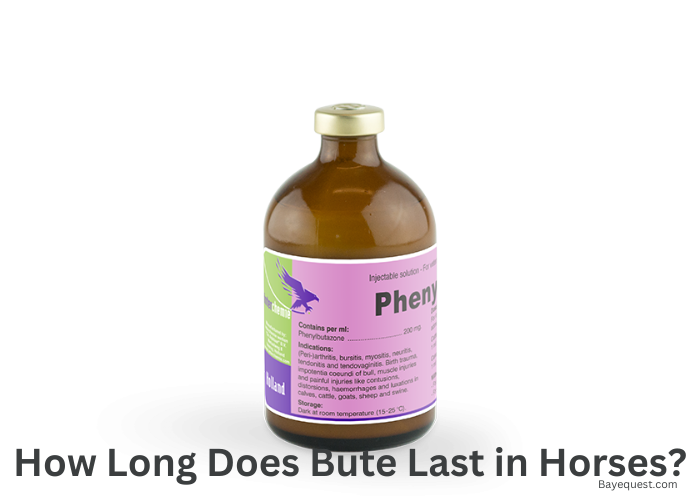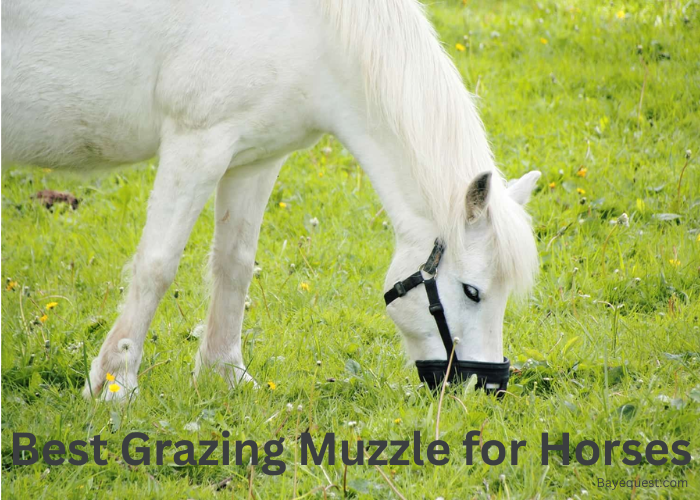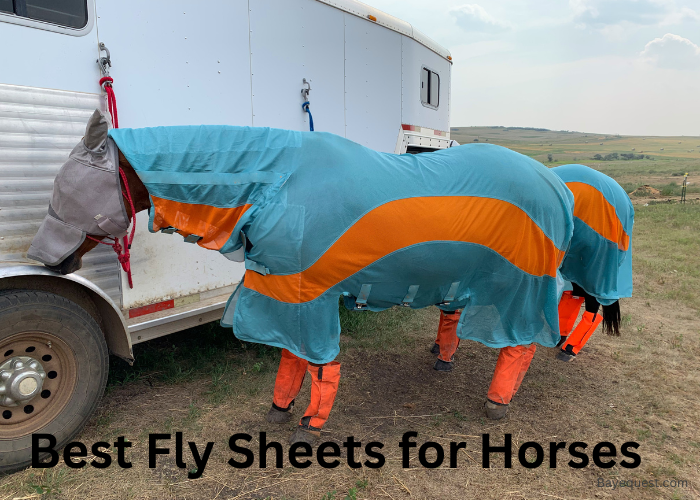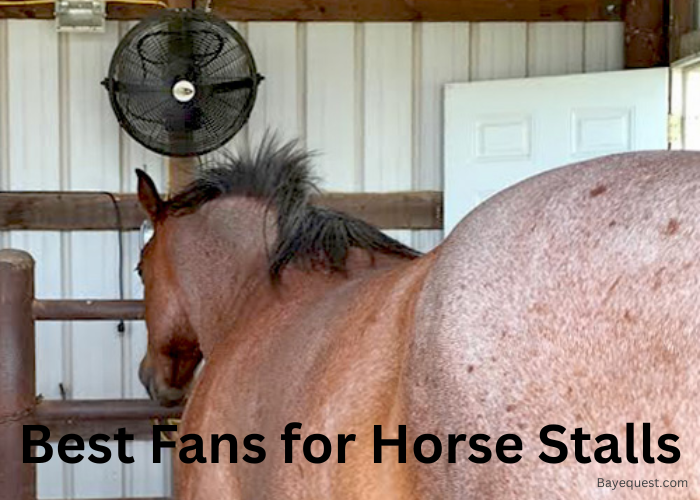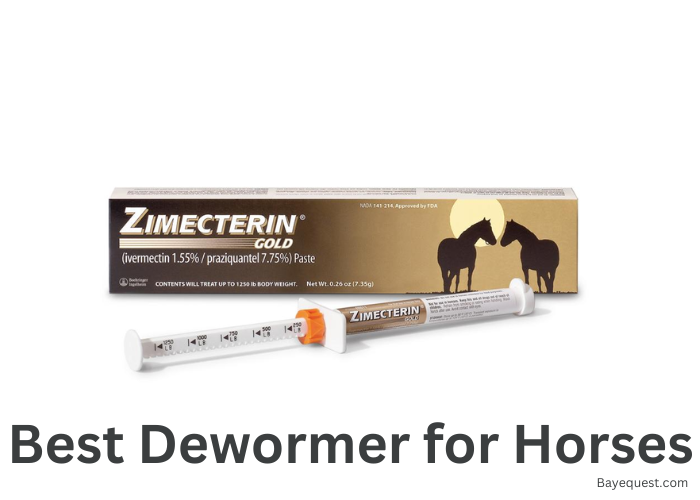Horses sometimes need relief from pain or inflammation. Knowing how long that relief lasts is important. It helps you care for your horse the right way.
In this blog, we’ll talk about one common solution and how long it stays in their system.
Many things can affect its duration, and understanding them can help you plan better.
Let’s take a closer look and answer any questions you might have about how long relief lasts for your horse.
How Long Does Bute Last in Horses? Key Takeaway
Bute lasts 12 to 24 hours in a horse’s system. Its peak effect is around 6 hours. For colic, relief may wear off after 6 hours, while for lameness, it lasts 12 to 24 hours. Long-term use can lead to buildup, taking longer to clear.
What is Bute (Phenylbutazone)?
Bute, or Phenylbutazone, is a non-steroidal anti-inflammatory drug (NSAID) used to manage pain and inflammation in horses.
It works by blocking enzymes called cyclooxygenases (COX-1 and COX-2). These enzymes are responsible for producing prostaglandins, which cause inflammation and pain in the body.
By reducing prostaglandin levels, Bute helps relieve pain and inflammation.
It can be administered either orally, through paste or tablets, or by injection. Bute is often used for short-term pain relief because long-term use can cause side effects.
These include ulcers, kidney damage, and gastrointestinal issues. Because of its strong effects, Bute should only be used under a veterinarian’s supervision to ensure proper dosage and avoid complications.
See also: What is DMSO?
How Bute (Phenylbutazone) Works in Horses
Bute, or Phenylbutazone, works by reducing inflammation and pain in horses. It blocks enzymes called COX-1 and COX-2.
These enzymes help produce prostaglandins, which are chemicals that cause pain and swelling. When Bute stops these enzymes, fewer prostaglandins are made.
This leads to less inflammation and pain in the horse’s body. Bute is especially useful for conditions like arthritis or injuries where swelling occurs.
However, it doesn’t cure the problem, it just helps manage the symptoms.
Common Conditions Bute Treat
Bute is commonly used to treat various conditions in horses that cause pain and inflammation. Some of the most common conditions include:
Arthritis. Bute helps reduce joint pain and swelling in horses with arthritis, making movement easier.
Laminitis. It provides relief from the painful inflammation of the hoof structures in horses with laminitis.
Lameness. For horses experiencing lameness due to injury or strain, Bute helps manage discomfort.
Muscle strains and sprains. It reduces inflammation in muscles and tendons, promoting faster recovery.
Joint inflammation. Conditions like synovitis or bursitis, where the joints or surrounding tissues become inflamed, can be treated with Bute.
How Long Does Bute Stay Detectable in a Horse’s Body?
Bute (Phenylbutazone) can stay detectable in a horse’s body for varying lengths of time. This depends on factors like dosage, frequency of use, and the horse’s metabolism.
Generally, Bute can be detected in a horse’s blood for up to 48 hours after administration. However, in urine tests, it can remain detectable for a longer period, sometimes up to 7-10 days.
This is important for horses involved in competitions, as most equine sporting organizations have strict withdrawal periods.
These rules require Bute to be cleared from the horse’s system before participation.
Always check with your vet and follow competition guidelines to avoid penalties.
How Long Does Bute Last in a Horse’s System?
Bute (Phenylbutazone) lasts in a horse’s system for 12 to 24 hours, depending on the dosage and the horse’s individual metabolism.
The effects can provide pain relief and reduce inflammation during this time.
However, the exact duration of its effectiveness can vary based on factors such as the horse’s weight, age, and the method of administration.
For most horses, Bute is given every 12-24 hours to manage ongoing pain.
This is always under the supervision of a veterinarian to ensure proper dosing and avoid potential side effects.
Factors that Influence How Long Bute Lasts in a Horse’s System
Several factors influence how long Bute (Phenylbutazone) lasts in a horse’s system:
Dosage. Higher doses of Bute may last longer, while smaller doses wear off more quickly.
Route of administration. Bute given intravenously may act faster but could wear off quicker than oral administration.
Horse’s weight. Larger horses may process Bute differently than smaller horses, affecting how long the drug stays effective.
Metabolism. Horses with faster metabolisms may break down and eliminate Bute more quickly, reducing its duration of action.
Age and health. Older horses or those with liver or kidney issues may take longer to process Bute, prolonging its effects.
Frequency of use. Repeated doses can cause the drug to accumulate in the body, affecting how long it lasts over time.
Possible Risks and Side Effects of Bute (Phenylbutazone) in Horses
Bute can be effective for pain relief, but it carries potential risks and side effects, especially with long-term or high-dose use. Here are some common risks:
Gastrointestinal issues. Bute can cause ulcers in the stomach or intestines, leading to discomfort, loss of appetite, or colic.
Kidney damage. Prolonged use of Bute can stress the kidneys, especially in dehydrated horses, leading to kidney damage or failure.
Liver damage. In some cases, Bute can affect liver function, particularly with long-term use or in horses with pre-existing liver conditions.
Blood disorders. Long-term Bute use may cause blood issues, including reduced white blood cell production, which can weaken the immune system.
Delayed healing. While Bute reduces inflammation, it can sometimes slow the healing process by masking pain and inflammation too well.
See also: Osteomax for Horses Side Effects.
How to Detect Bute Overdose in Horses
Here are some common signs of overdose:
1. Loss of appetite. If a horse refuses to eat or shows a sudden decrease in appetite, it could indicate gastrointestinal distress caused by Bute.
2. Colic symptoms. Abdominal pain, restlessness, and rolling on the ground are signs of colic, which can result from stomach or intestinal ulcers caused by Bute overdose.
3. Diarrhea. Loose stools or severe diarrhea can occur if Bute irritates the gastrointestinal tract.
4. Lethargy. An overdose may cause extreme tiredness, weakness, or lack of energy in the horse.
5. Swelling in limbs. Fluid retention or abnormal swelling in the legs (stocking up) can signal a reaction to Bute.
6. Kidney issues. Signs of kidney problems include dark urine, reduced urination, or dehydration.
Alternative Pain Relief Options for Horses
Other pain relief options for horses are:
Flunixin meglumine (Banamine) and Meloxicam are other NSAIDs used to manage pain and inflammation. Also, check out our article on Banamine dosage to determine the amount of medication your horse may need.
Cold therapy which involves applying ice packs to reduce swelling and pain after an injury.
Massage therapy relieves muscle tension and improves circulation in horses.
Acupuncture uses needles at specific points to alleviate pain and promote healing.
Equine Chiropractic care can help realign joints and relieve pain from misalignments.
Herbal supplements like Devil’s Claw and Yucca may offer natural pain relief.
Laser therapy uses low-level lasers to stimulate healing and reduce inflammation.
FAQs
What is the duration of action for bute?
Bute provides pain relief for about 12 to 24 hours in horses, depending on the dose and individual factors like metabolism and weight. Always follow your vet’s instructions for proper dosing and timing.
Do I need a prescription to buy Bute for horses?
Yes, Bute is a prescription medication. You’ll need a veterinarian’s prescription to purchase it, as it should only be used under veterinary supervision.
Conclusion
In summary, Bute can provide pain relief for 12 to 24 hours in horses, but the exact duration depends on several factors.
Follow your vet’s advice when using Bute to ensure your horse stays safe and comfortable.
While it’s effective for managing pain, using it correctly can help avoid side effects. Always be aware of withdrawal times, especially if your horse competes.
Also, keep a close eye on your horse’s health while using Bute to make sure they get the care they need without complications.




